Something I don’t often talk about is how I came to my interest in Mary Magdalene. For the most part I’ve believed that my own story doesn’t matter because I want to think and write about Mary Magdalene, not about myself. I have to admit though that my renewed interest in the topic has come with a good deal of introspection and reflection on the last 30 years of my life, as well as my own circuitous and often incongruous spiritual journey. Because I have a deep interest in not misrepresenting myself, perhaps it’s time to share: Mary Magdalene came to me in dreams.
I was brought up in a non-denominational, charismatic, Bible-believing, speaking-in-tongues kind of Christianity, before the word “evangelical” was as widely used as it is today. I remember being asked by kids at school (before I was “homeschooled” by a woman in our church) what my religion was, and after responding “Christian,” being asked “what kind of Christian?” I was befuddled by the question, so I asked my parents: “What kind of Christian am I?”
I hadn’t been aware that there were even different kinds, and the only answer I got was “born-again Christians.” In this way I was “not of the world;” distanced from my peers and confused by social norms. When I left home I rebelled hard. I read everything I could get my hands on about world religions and “alternative” spiritualities, and tried on a good number of them. Sometime in the mid-1990s, while reading about mystery religions and fertility cults, I somehow landed on the mistaken impression that the prostitute Mary Magdalene had been a sacred prostitute.
I went to my Bible (because I still owned several, even though they were all KJV) and looked up every reference to her, shocked that there was nothing Biblical about her being a prostitute. It bothered me. Even though by this time I wasn’t surprised by the religious sleight-of-hand I’d experienced growing up, this felt shocking. A major Biblical figure whom I had somehow completely misunderstood. Had I been told by anyone in church that she was a prostitute? By anyone in my family? I didn’t remember. It was like I had absorbed her identity as a prostitute through some kind of cultural osmosis, and had a creeping sense of discomfort about the whole thing. If that wasn’t who she was, then who was she?
For the most part, I set the question aside and moved on with my life. I’d discovered that ignoring my way to peace was a viable alternative to grappling with hard questions about my upbringing. Stuffing my cognitive dissonance into a compartment to be cast to the bottom of the ocean had become my coping strategy of choice, and I have a talent for distracting myself from that which eats away at me. Mary Magdalene, however, wasn’t eager to let me go.
In my first dream of Mary Magdalene, I was setting up an altar to her on top of a tall dresser. There was a red cloth on which I placed a glass candle cup that was robin egg blue, a novena candle, and an elaborately-carved wooden triptych of Mary Magdalene in triple aspect. Lightning flashed in the room. At this point in time, that’s all I can remember. When I woke up I was fascinated by this idea of Mary Magdalene in a triple aspect like the Morrígan, or Hecate, or the Fates, or any of the other “triple” figures I’d read about in mythology. It stuck with me and I pondered it.
Then I dreamed of her again, and again of setting up an altar. I talked with a friend about it, and he suggested that I just create one and see what happens. So I did. It was simple. A rather generic statue of a praying woman from eBay, a red novena candle, a silk robin egg blue cloth. I didn’t know what to do with it, other than to just start learning about Mary Magdalene. I read everything I could get my hands on: academic books about Mary Magdalene (there weren’t many at the time), New Age books about her, patristic references and commentaries about her, Gnostic and other non-canonical material about her. I started a website, Magdalene.org, to serve as a repository for everything I was learning. I started a Magdalene email list for others who were also interested in her, something that surprised me almost more than anything else. I met up with a local author who had written about her, attended a small conference about her in New York, and corresponded with scholars. And during this time, I continued to dream.
After those first dreams of setting up an altar, most of my dreams about her, directly or indirectly, contained weeping. Not just any weeping; this was what I can only describe as the kind of soul-rending weeping that you experience when you grieve the loss of someone you love. It wasn’t something I’d experienced at that time; I’d not yet lost anyone close to me, and still those dreams were swelling with grief. Sometimes I even woke up weeping. Occasionally in dreams I was observing Mary Magdalene at the empty tomb, weeping for the loss of a man whom she loved more than anything else. I experienced it with her, this sense of loss, and simultaneous overwhelming love.
In one dream, it was the power of Mary Magdalene’s love itself that brought Jesus back to life. I woke from that dream not with tears of sorrow, but of elation. It’s mystifying how we can experience in dreams emotions so strong that we almost can’t contain them in waking life; in this dream I experienced a sense of complete and perfect love. This led me to embrace the sentiment that not only is “love as strong as death,” as it says in a passage from Song of Songs often associated with her–love is stronger than death. When death occurs, it is the love that remains.
I spent a great many years unwinding my upbringing with therapists, and through it all continued reflecting on my relationship to Mary Magdalene and what she represented. Maybe not to everyone else in the world, but to me. To be honest it seems to shift over time, even now, but in retrospect it is always the power of the resurrection narrative and her role in it that moves me most deeply. I’ve reinvented myself so many times, out of necessity and out of regret, out of pain and out of joy. Mary Magdalene is always there to remind me that renewal is possible, and that when things look the darkest the dawn will break.
At this point in time I don’t think I can ever be a capital-C Christian again, but neither can I entirely leave it behind. It’s in my bones, it’s part of who I am even if I never utter another word of belief. I’m inspired by the Gospels, but I’m repulsed by doctrine; there might be a place where I will find belonging among similar people, but I’ve not yet found them. My spirituality is mystical and idiosyncratic, just as my parents’ was, but it’s entirely mine. I’m comfortable with that. I no longer dream, or it is at least extremely rare. I find myself in the business these days of metabolizing the dreams of my youth, becoming the woman I needed when I dreamed them: a woman whose loss is profound, whose sorrows are multitude, but whose ability to love, to hope, to persevere, is even stronger.
When I set aside the abstractions of my imagination, this is who Mary Magdalene is to me today: Anointer, Witness, and Proclaimer. Her radical love is the red thread that runs through what is paradoxically the most transcendent and also the most human story of Western civilization. For two thousand years she has been here, and we’ve only just begun to see her. She is here, with her tears and her love, in the depth of the world, and I feel her. If I ever approach the cross again, in any capacity, it will be because of her. In that I know, somehow, that I am not alone.
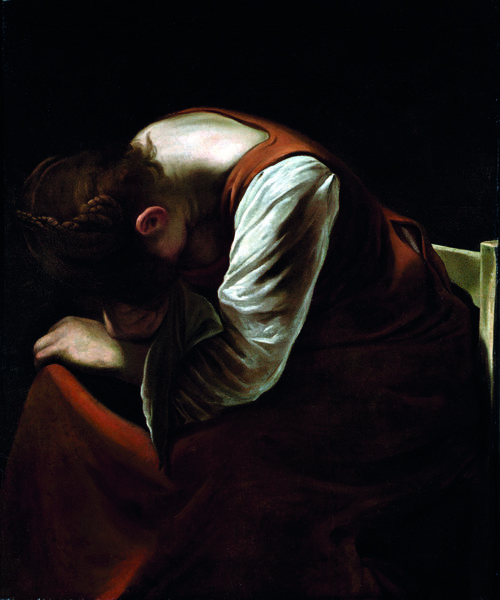
Maddalena Addolorata (“Sorrowful Magdalene”), by Caravaggio, 1605-1606.
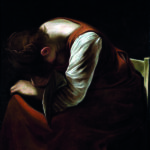
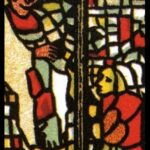
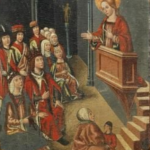
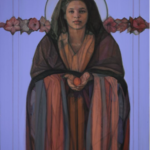
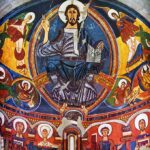
One response to “Love is stronger than death: My Mary Magdalene journey”
Thank you for sharing your journey. It is very interesting. It made me have questions regarding your upbringing.